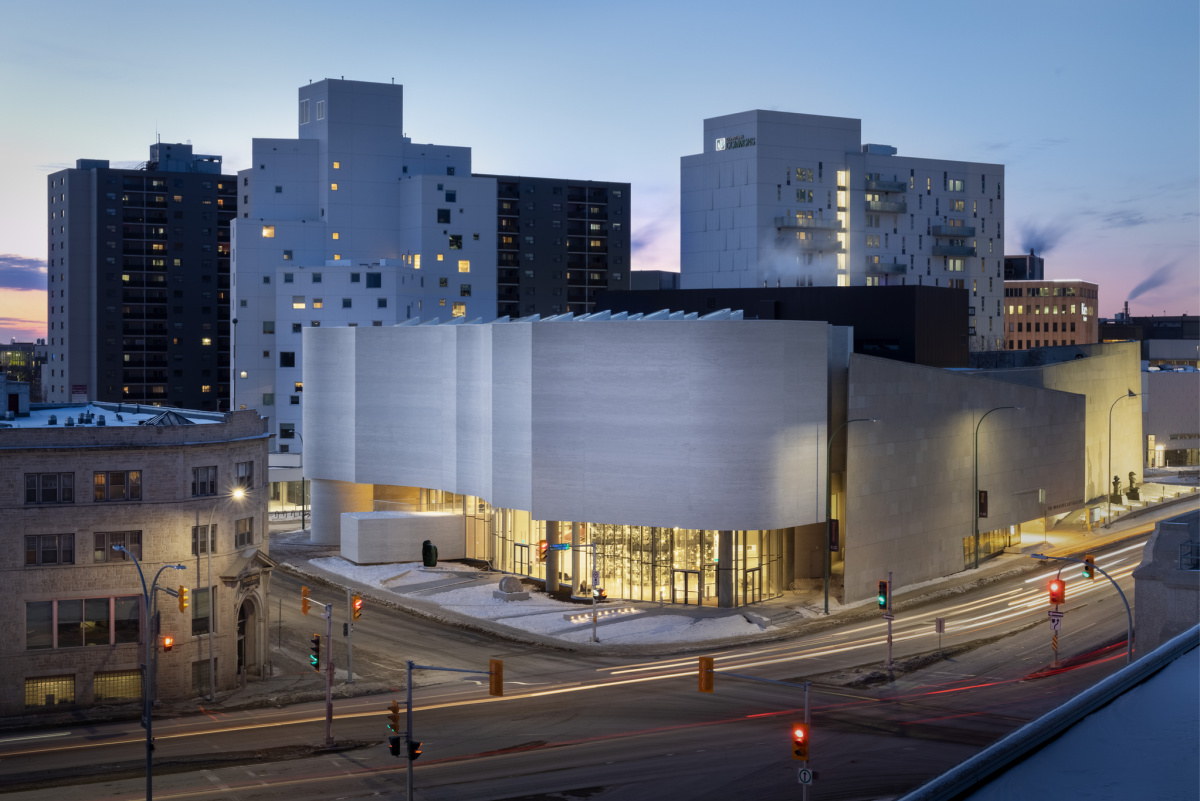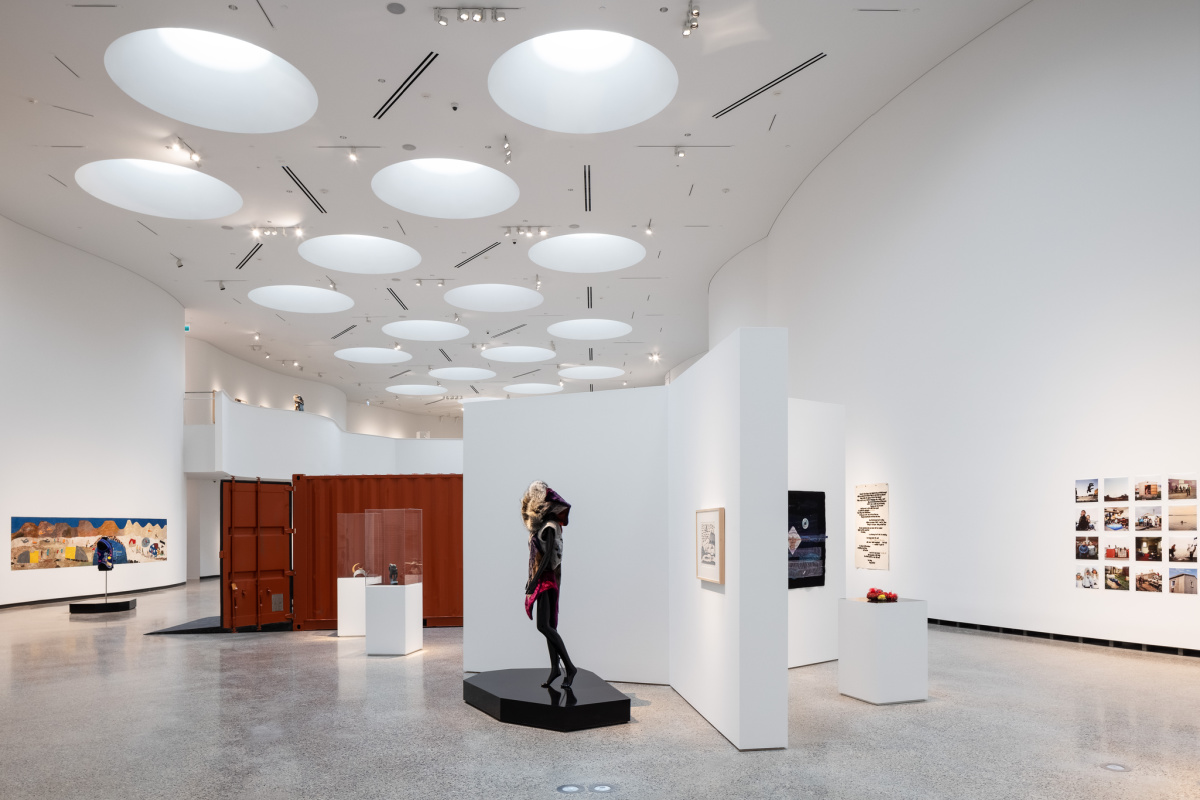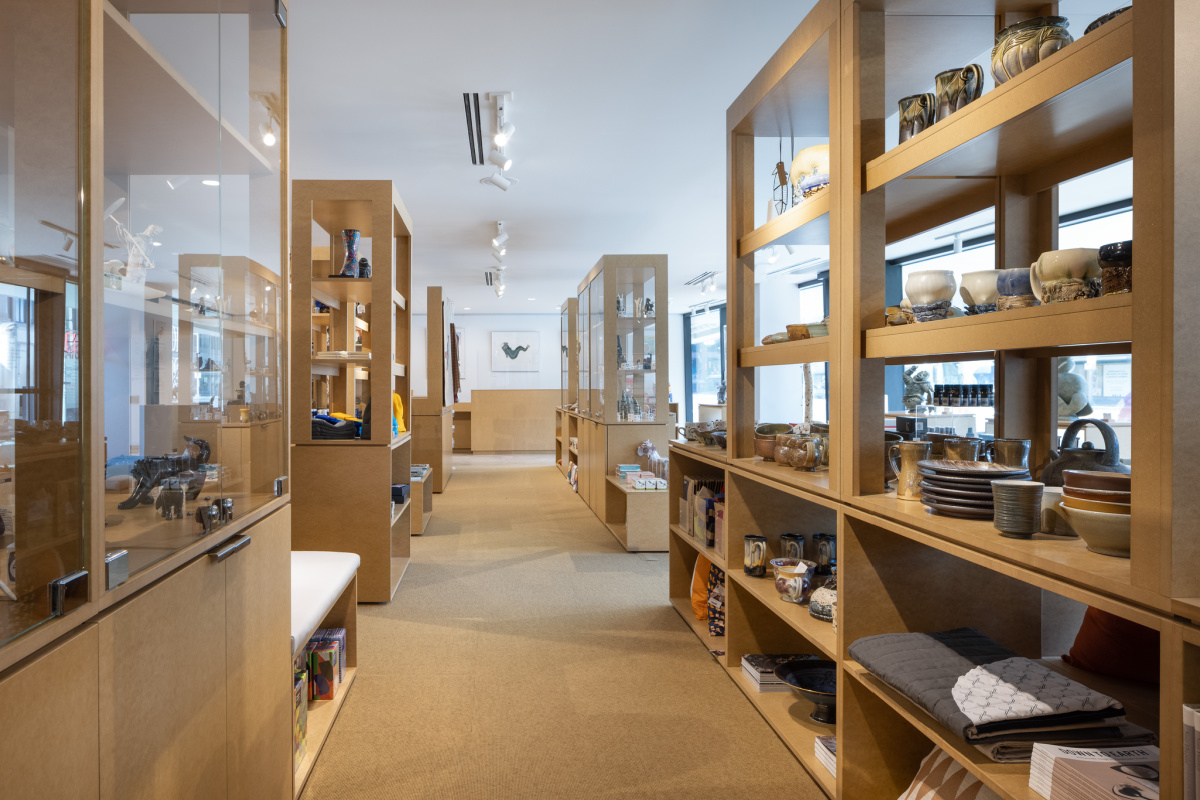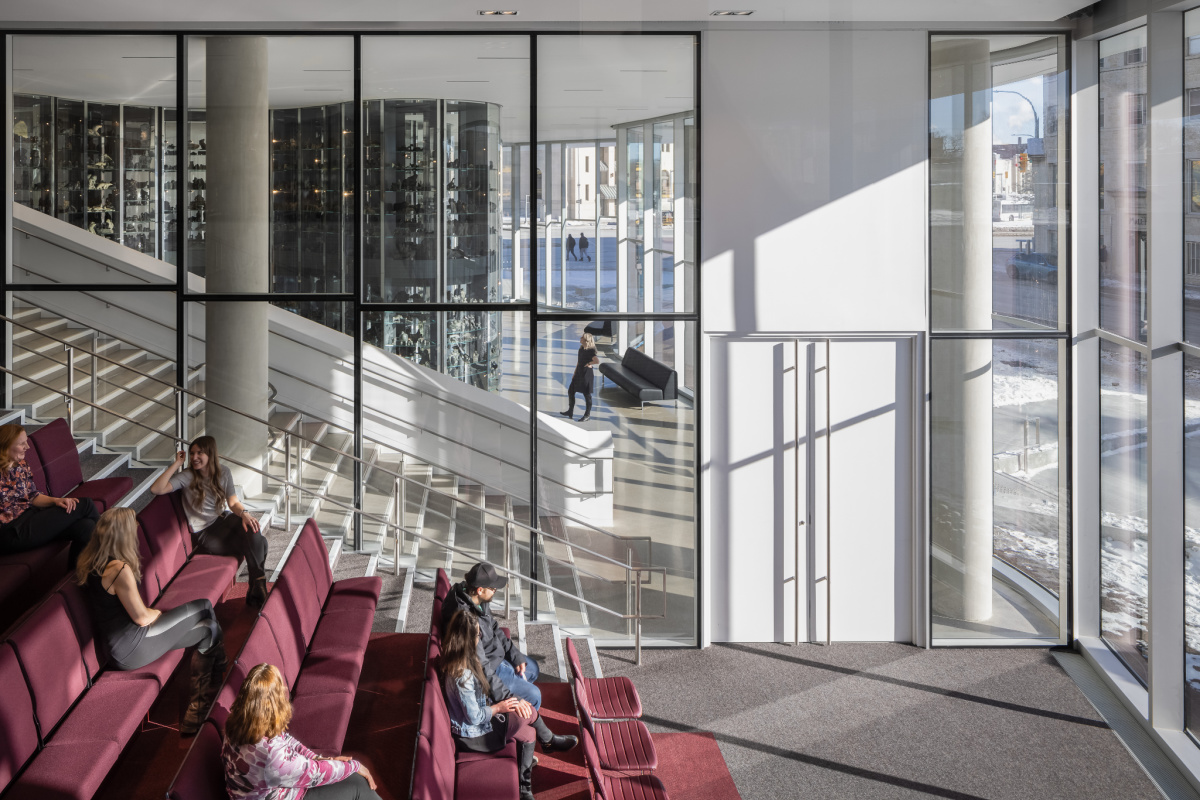Originally published April 23, 2021
While strolling through Qaumajuq, you could be forgiven for dreaming that you are in a light-filled arctic landscape, with snowdrifts leading you to your next sensory adventure. You are in fact, visiting a new art gallery that is, according to En Route magazine, “the most significant cultural opening Canada has seen this century.”
Qaumajuq means “it is bright, it is lit” – which aptly describes the new Inuit Art Centre at the Winnipeg Art Gallery in Manitoba. Built as an addition to the original art gallery, the innovative new museum dedicates itself to Inuit art and culture, and is now home to the largest public collection of contemporary Inuit art in the world.
Architecturally, it’s a marvel. Designed by Michael Maltzan, the light-filled building is designed to capture the “ephemeral qualities of northern environments.”

Qaumajuq/the new Inuit art gallery in Winnipeg/photo: Lindsay Reid
Qilak, the main exhibition gallery on the building’s third level, is a breathtaking 8,000 square feet of space where monumental, sculptural walls rise up thirty feet, evoking the landscapes of the North, while twenty-two skylights let natural daylight shine through.
The penthouse level and rooftop has been dedicated to creating art, with new, sun-filled studios and classrooms. They include a lobby and reception area, clay studio, digital media studio, kiln room, and two exterior studios for summer and winter activities, such as stone carving and ice sculpting.
In the interactive theatre Ilipvik, state-of-the-art technology virtually connects students, teachers, curators, artists, elders, and community members.
The museum’s permanent collection features more than 2,000 Inuit artists from many of the communities of the North, totalling close to 14,000 pieces.
The inaugural exhibition, INUA features artists from all across the Arctic, from Greenland to Alaska, with everything from traditional carvings, to a Seal Skin Spacesuit by artist Jesse Tunjilik, or a silver and wood teapot crafted by Happy Valley‑Goose Bay artist Michael Massie.

Qilak, Main Inuit Gallery, Qaumajuq/photo: Lindsay Reid
A highlight for visitors, or even just those strolling past, is a three-storey glass vault, the world’s largest for Inuit art, visible from the street. This larger-than-life glass storage vault houses a portion of the Gallery’s Inuit art collection.
Up until now, much Inuit art has been acquired and curated by settlers, and some of it treated as “artifact” rather than art. Qaumajuq has transformed that reality. From choosing its name, to curating its first exhibit, Qaumajuq is an indigenous-led art centre, representing a space that has been created by those who are from the Inuit culture.
A visit to this museum will help families appreciate that Inuit art encompasses far more than just statues and carvings.
Qaumajuq is open now, and its first exhibition, INUA is scheduled to run until February 2022. In the spirit of reconciliation and respect for the original peoples of Canada, admission to WAG-Qaumajuq is free for all Indigenous Peoples.

Gift shop at the Winnipeg Art Gallery/photo: Lindsay Reid





